Crypto Trading Cards (1880-1979) were released January 17, 2024, by HiFo Labs. This Guide provides insights into four fundamental aspects of the cards:
-
the concept behind the cards as a tribute to the origins of cryptocurrency (and how they relate to Nakamigos & CLOAKS);
-
the process involved in creating the cards one at a time with artificial intelligence, curated from approximately 4000 cards to the final 837;
-
the types of cards, including those referencing the Bitcoin Whitepaper, the origins of cryptocurrency, famous baseball players, etc.; and
-
the scarcity and structure of the collection.
1. CONCEPT
HiFo Labs believes in cryptocurrency in its purest forms and the promise it offers to the world. HiFo’s seminal creation, Nakamigos, were first referenced in a tweet October 31, 2022 – the anniversary of the 2008 Bitcoin Whitepaper by Satoshi Nakamoto. The term Nakamigos is a merging of the words Nakamoto and Amigos – it means friends of Satoshi. In contrast to Satoshi, a lesser-known person at the origins of cryptocurrency is Hal Finney, who received the first Bitcoin transaction.
One remarkable message Finney wrote 15 years before the Bitcoin Whitepaper has the subject “Crypto trading cards” – a phrase that could describe NFTs of today. Finney sent that message January 17, 1993. What if, 31 years later on January 17, 2024, a box of old Crypto Trading Cards was revealed and released? This became the concept behind the cards. But to create the cards, some questions had to be answered.
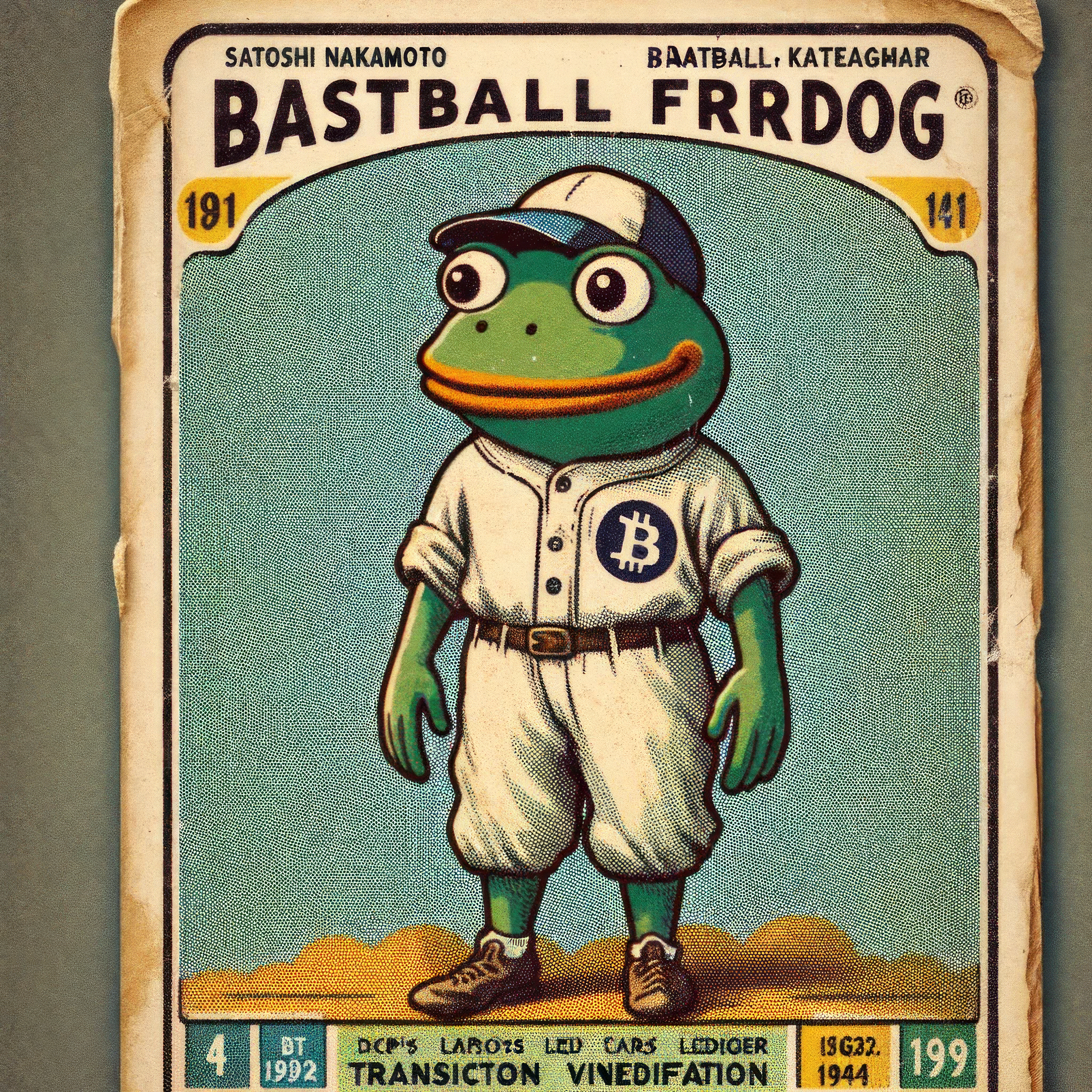
If an old box of Crypto Trading Cards were discovered in an attic, what would those cards look like, especially if some were more than 100 years old? We think they would be in the style of vintage baseball cards, and some might say something like “Crypto Trading Card” or “Authentic Digital Collectible.” In this way, the cards would suggest that, although terms such as “crypto” and “digital” likely were not known to many in these old eras, perhaps those nascent concepts were indeed part of the world and simply needed the breakthrough minds of people like Hal Finney to bring them out.
And what would the players on the cards look like? Well, if the concepts and phrases in the cards are the precursors to the origins of cryptocurrency, then the players are precursors to the most recognizable character tied to the origins of cryptocurrency: Pepe the Frog, created by Matt Furie. Thus, the players are all frogs of various types, and a few in the collection hint at the creation Matt Furie would later manifest. (The name of the collection including the span of dates is also a nod to the iconic Rare Pepe (2016-2018) collection.)
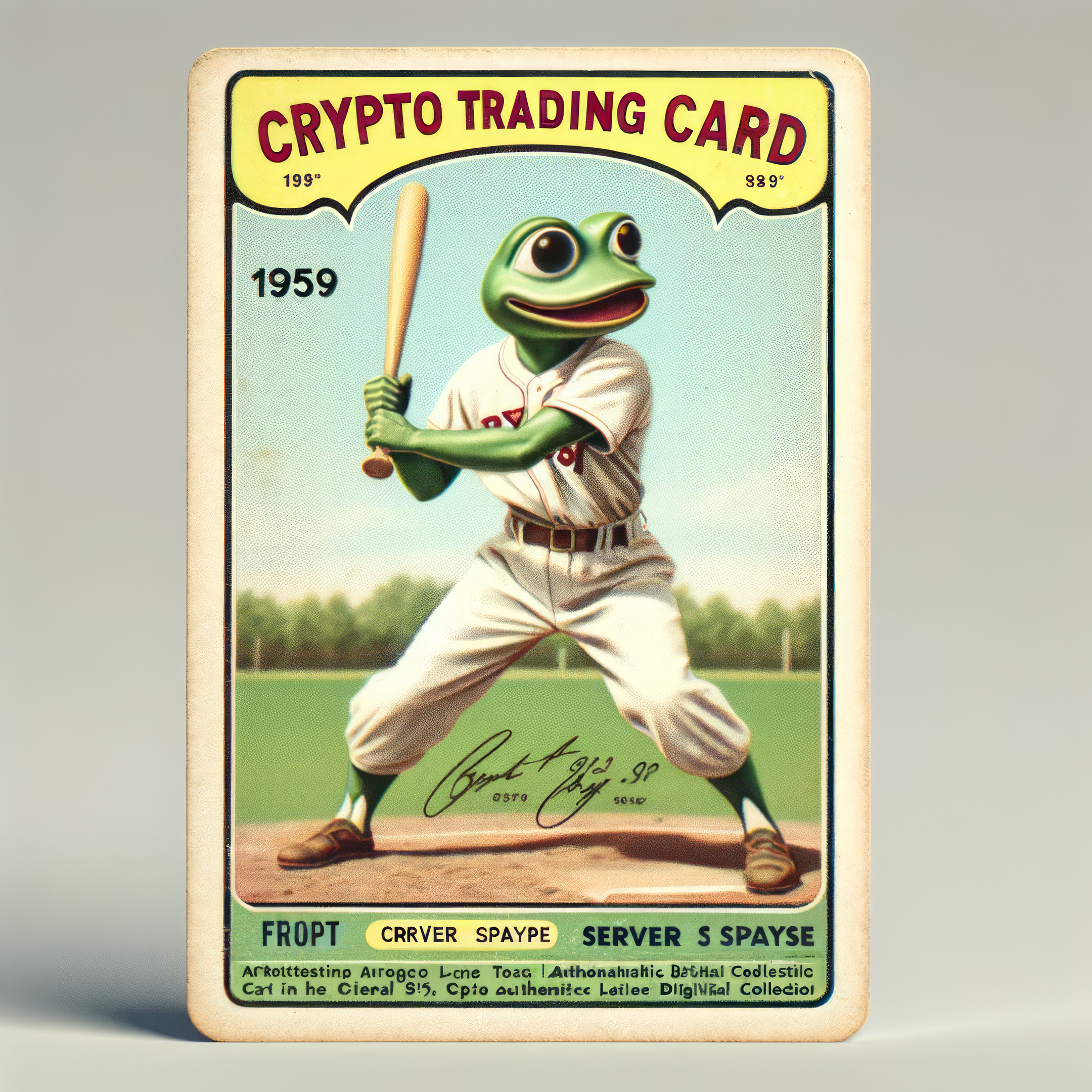
How could this all be put together to create what look like true, physical, worn down vintage cards? Artificial Intelligence, including both its unprecedented abilities and current shortcomings, could show us what these cards look like.
A final question about the cards was how many are there, and who gets them? The cards were discovered in an old box in an attic, so a number like 10,000 or 20,000 would be too large. The number would likely be under 1000. After creating approximately 4000 cards one by one with artificial intelligence, 837 made the final cut – these are the ones that were discovered in the box. And who should receive them? The fairest approach was to make them all free and give Nakamigos and CLOAKS holders the first opportunity to mint, 1 per wallet. Of course, with this scarce of a collection, there would not be enough for every holder to receive a card. But there was another discovery in the attic: An antique Hal Froggy Bobblehead, perhaps from the 1920s, free for all holders.
In short, these Crypto Trading Cards, along with the Hal Froggy Bobblehead, embody the precursors to cryptocurrency, with a particular tribute to Hal Finney and his ideas.
2. PROCESS
The cards were created one at a time with Artificial Intelligence, using a human prompt for each card. Approximately 4000 cards were individually created, and the set was curated to the final 837 cards. No API or other automation was used to generate the images. As an art project reliant on Artificial Intelligence, the cards revealed fascinating aspects of the abilities and limitations of AI, evoking the emerging AI genre of Post-Photography. On the one hand AI could create mesmerizing realism in these vintage cards that look like they are actual physical objects from another era; on the other hand, the AI generated text and symbols that were often imprecise or merged together. The curation process left only the most fascinating and physically real looking cards, AI text and all.
Additionally, each of the final cards was upscaled to 4k resolution (2160 x 2160px), beyond standard AI outputs, to make each card feel as lifelike as possible.
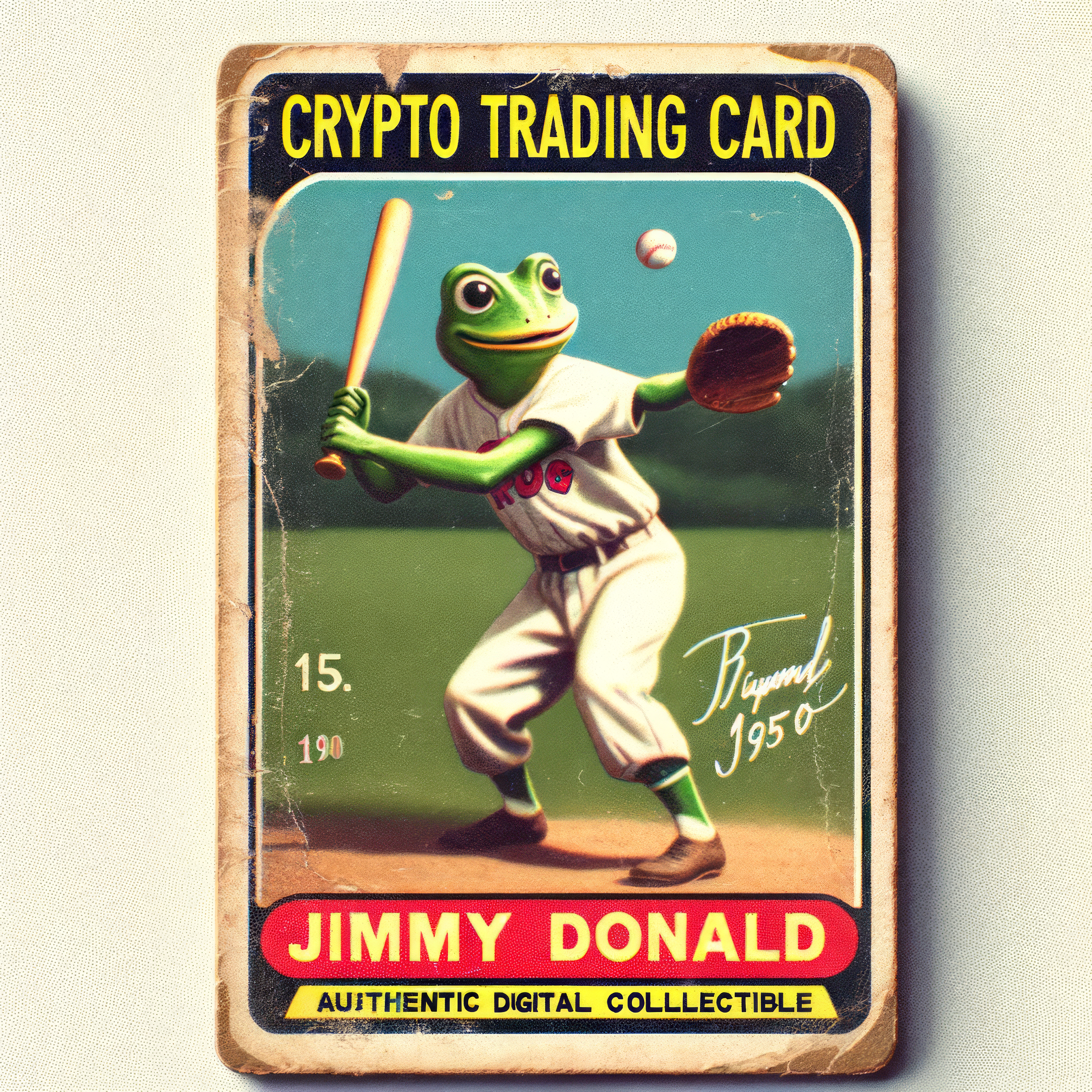
3. TYPES
There are various types of cards and not everything about them will be revealed in this Guide. Here are some references to look for:
The Bitcoin Whitepaper
Example: Crypto Trading Cards #104 (Winston Dai) is a reference to Wei Dai, author of “b-money” – the first reference cited in the Bitcoin Whitepaper. ↓
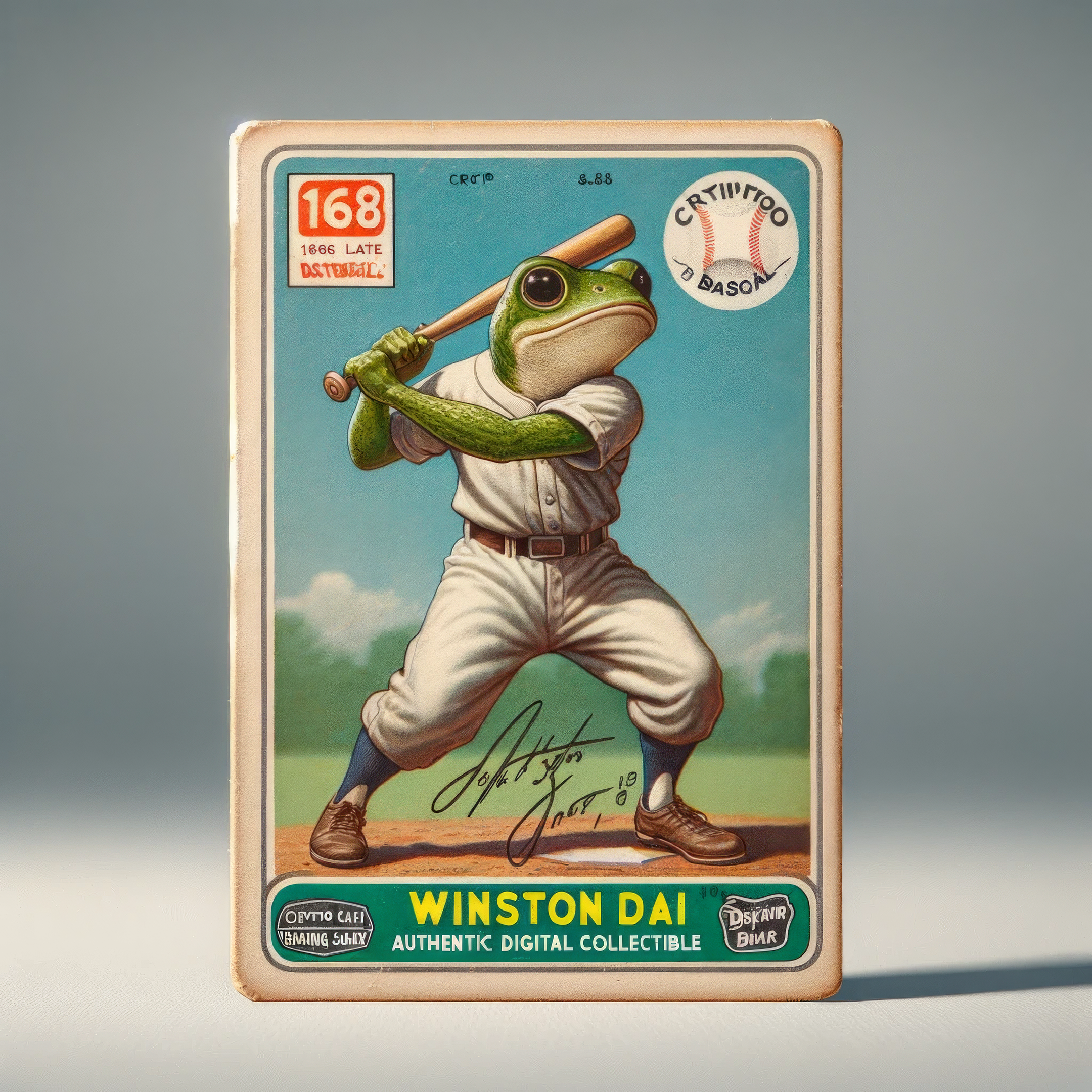
Example: Crypto Trading Cards #800 (Phil Storneta) is a reference to W.S. Stornetta, co-author of references 3, 4, and 5 in the Bitcoin Whitepaper. ↓
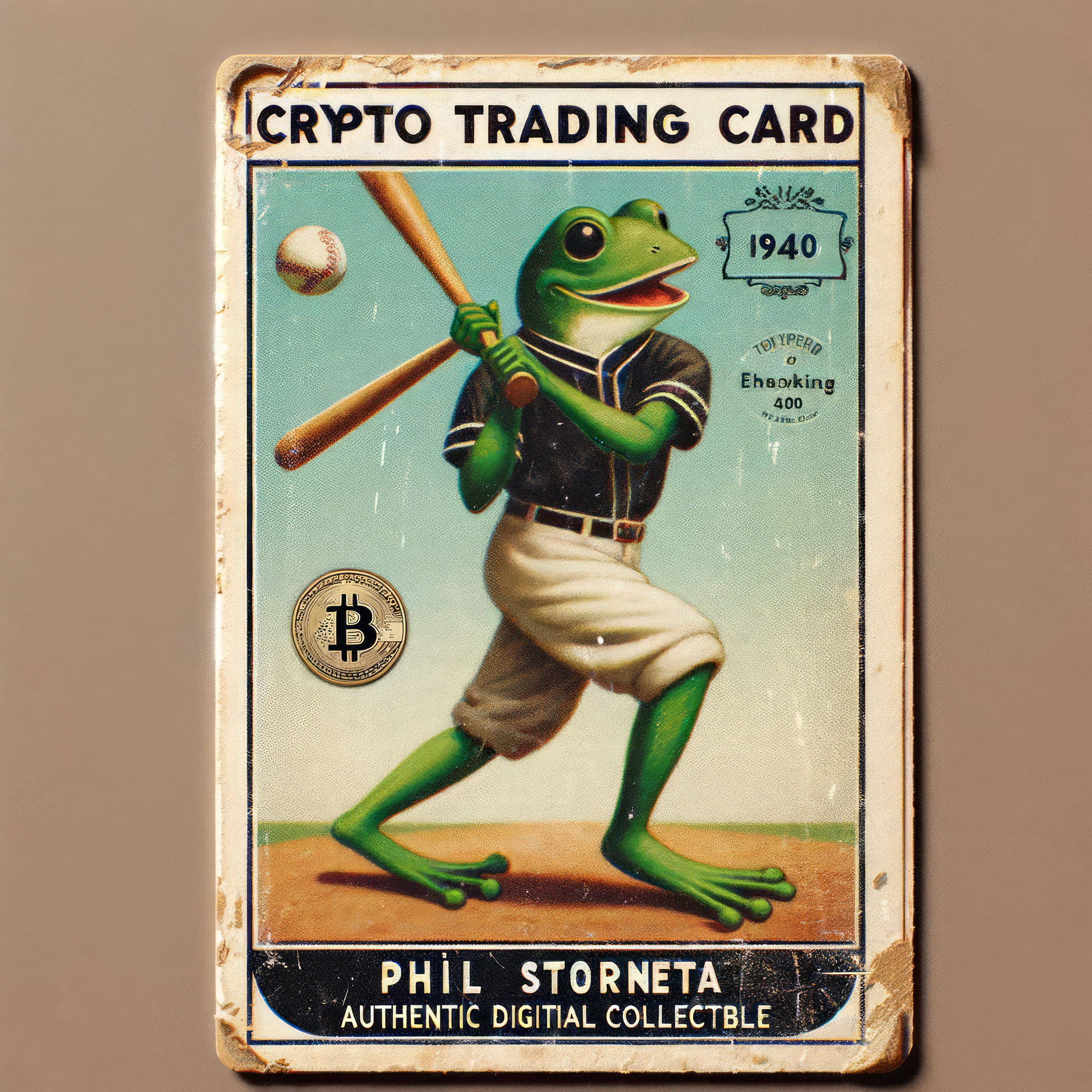
Additional Examples:
#396 (Hash Cash): Adam Back, 6th reference cited in Bitcoin Whitepaper
#439 (Pierre Toper): “Peer to Peer” title of Bitcoin Whitepaper
#817 (Bayer Haber): D. Bayer, S. Haber, 4th reference cited in Bitcoin Whitepaper
#181 (Merk L. Rubens): R.C. Merkle, 7th reference cited in Bitcoin Whitepaper
#317 (Frog Feller): W. Feller, 8th reference of Bitcoin Whitepaper
#81 (Tom Kanoa): Anagram of Nakamoto
#250 (Diffie Kupy): Difficulty adjustment
Early Days of Cryptocurrency
Example: Crypto Trading Cards #62 (Dusty D. Trimmell) is a reference to Dustin D. Trammell, one of the first people to reply to Satoshi’s release of Bitcoin v0.1. ↓
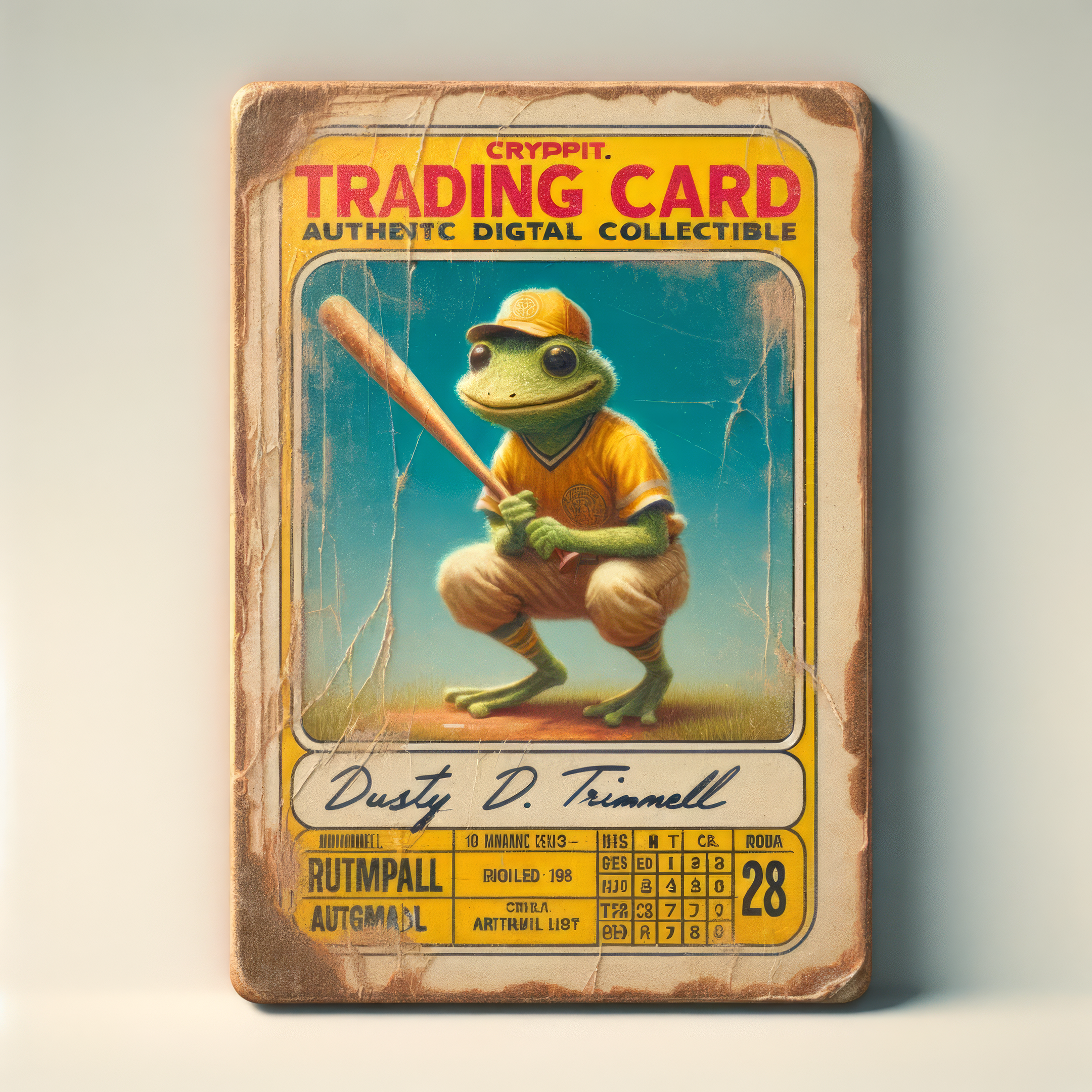
Example: Crypto Trading Cards #144 (Saab Unir) is a reference to Sabunir, one of the first people to offer a JPEG for cryptocurrency. ↓
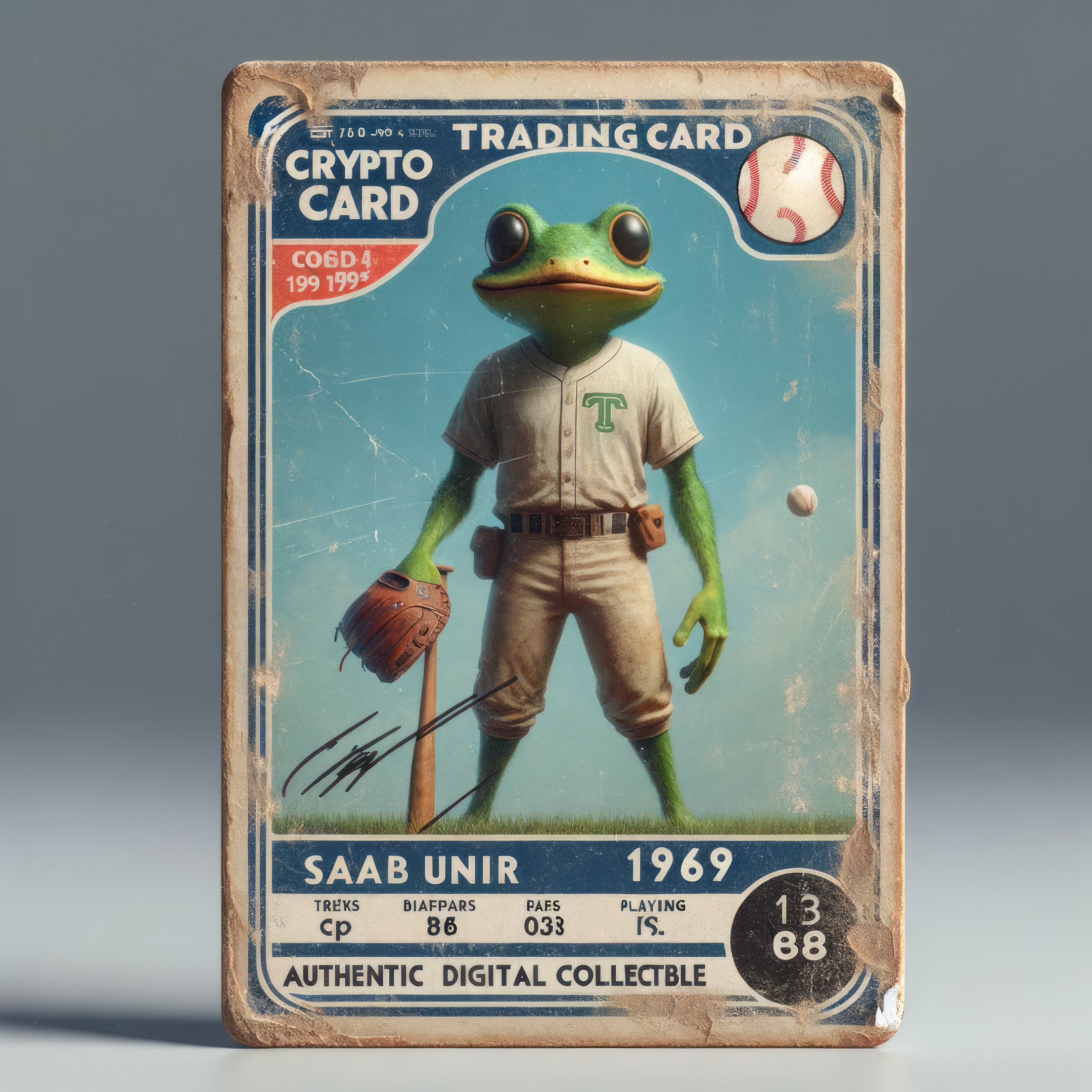
Additional Examples:
#510 (Chance Ellor): “Chancellor on the brink…” (Bitcoin genesis block)
#813 (Raw Hex): Bitcoin genesis block
#340 (Mac Laszlo): Laszlo Hanyecz, invented GPU mining, Bitcoin pizza guy
#461 (Vinny Andre): Gavin Andresen, core dev for Bitcoin
#761 (Mickey Hearn): Mike Hearn, core bitcoin dev
#660 (Jimmy Donaildson): James Donald, messaged with Satoshi about Bitcoin
#440 (Johnny Levino): John Levine, messaged with Satoshi about Bitcoin
#595 (Metz): metzdowd.com, from The Cryptography Mailing List
#18 (Major Domo): majordomo, from The Cryptography Mailing List
Cryptography, Economics, Mathematics
Example: Crypto Trading Cards #175 (Levi Strong) is a reference to “Dolev-Strong”, a cryptography protocol from 1983. ↓
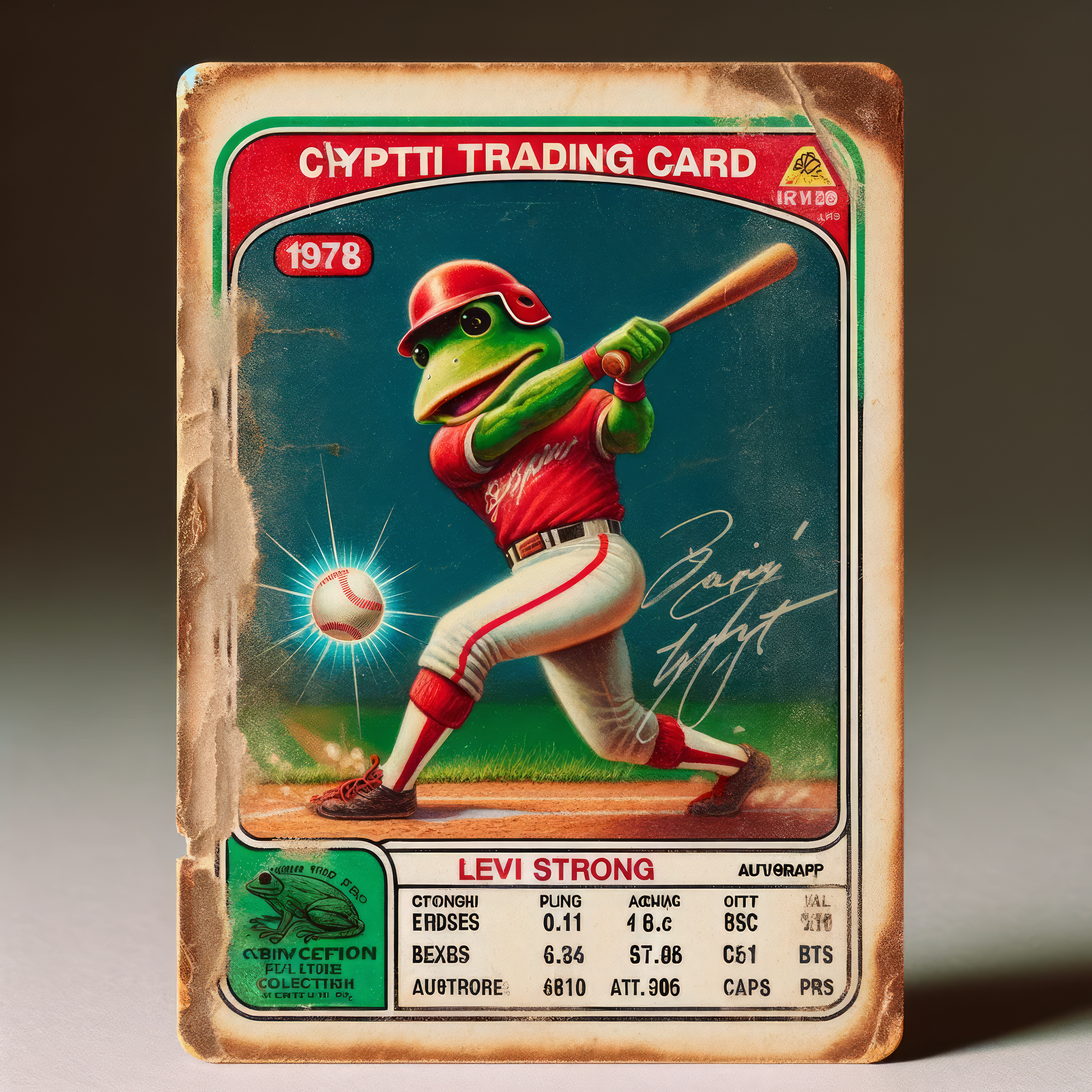
Example: Crypto Trading Cards #534 (Cy D. Work) is a reference to Cynthia Dwork, co-author of one of the first papers to introduce Proof of Work. ↓
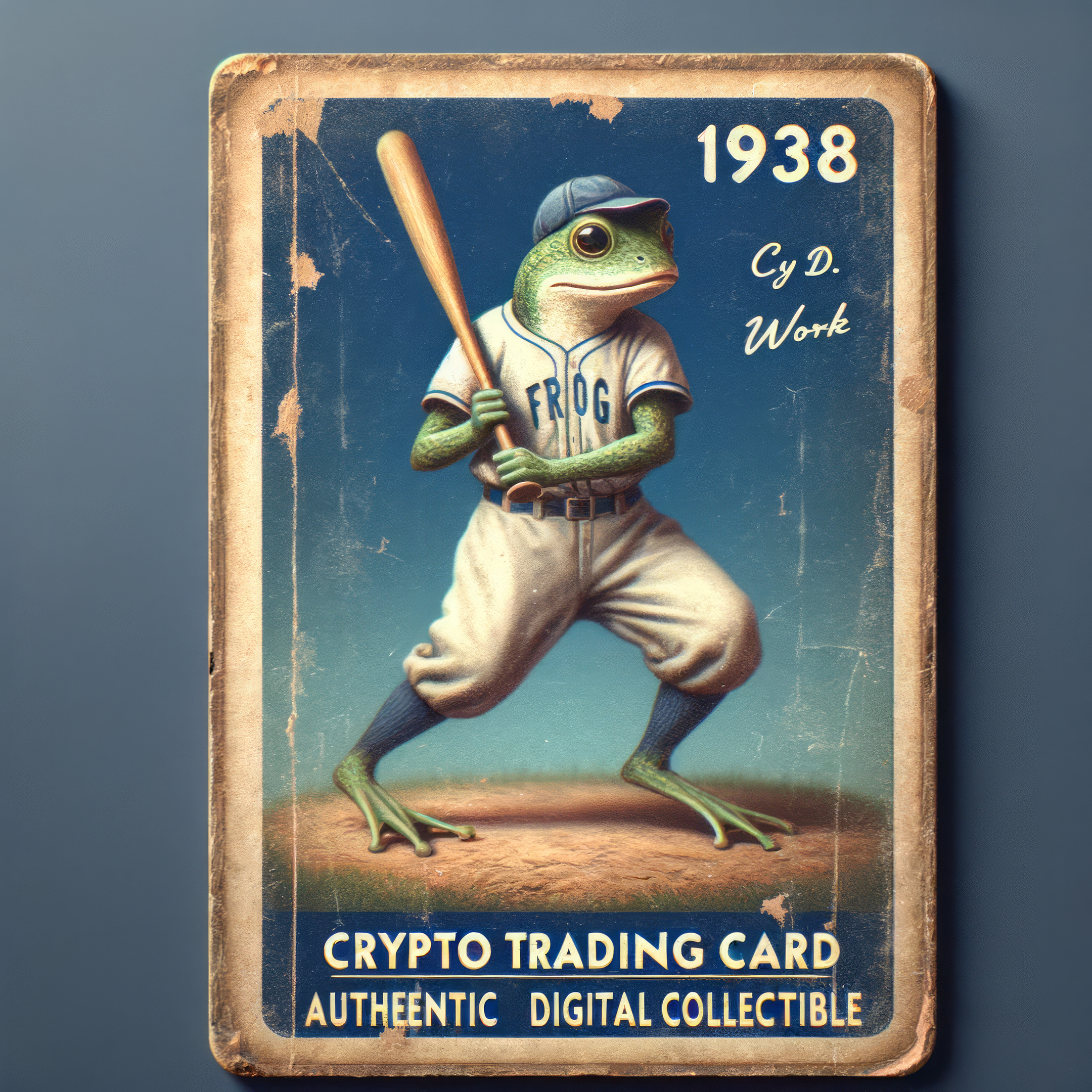
Additional Examples:
#364 (Diffie Hopman): Whitfield Diffie, public key cryptography pioneer
#580 (P.G. Petersson): PGP, encryption program used for communication
#397 (Turing Fielder): Alan Turing, pioneer of computer science
#559 (Ricky Szabo): Nick Szabo, cryptography pioneer
#294 (Johnny Triithemski): Johannes Trithemius (born 1462), cryptography pioneer
#805 (Alberti Bapist): Leon Battista Alberti (born 1404), cryptography pioneer
#127 (Bizzy General): Byzantine Generals Problem
#106 (Cy Pherris): Cypher
#208 (Kirk Hoffs): Auguste Kerckhoffs, formulated cryptosystem requirements in 1883
#233 (Clauide Shanot): Claude Shannon, famous cryptographer
#260 (Check Sam): checksum, data for error detection
#269 (Ronald Rivster): Ronald Rivest, famous cryptographer, the “R” in RSA
#280 (Bill Mazk-roski): Bill Mazeroski and zk-proofs
#544 (Zeke Proof): zk-proofs
#22 (Alistair Bobbington): reference to Alice & Bob in academic papers
#25 (Sha-less Jack-Frog): “Shoeless Joe Jackson”, SHA-256
#43 (Mel 0x): 0x wallet addresses, Mel Ott rookie year 1931
#797 (Bill Sy): Sybil, type of network attack
#83 (Elzzbee Smith): Elizebeth Smith Friedman, cryptography pioneer
#428 (Sandy Oram): Andy Oram, author of P2P book from 2001
#247 (Mon Naor): Moni Naor, co-author of early paper on Proof of Work
#780 (Silvio Mialato): Silvio Micali, author regarding zk-proof systems
#631 (Robbe Hettiings): Robert Hettinga, economist
#367 (Henry de Soto): Jesus Huerta de Soto, economist
#124 (Duke Brunswick): Duke of Brunswick-Luneburg, cryptography author
#128 (Thorman Veblen): Thorstein Veblen, economist
#140 (David Freeman): David Friedman, author regarding cyberspace
#165 (Cliff Keyner): John Maynard Keynes, economist
#170 (Art Laffy): Arthur Laffer, economist
#114 (Cole Mogorovski): Andrey Kolmogorov, mathematician
#5 (Ian Grups): Ian Grigg, cryptography author
#489 (Froger Dingiledine): Roger Dingledine, founder of Tor
#480 (Pete Slamport): M. Pease, L. Lamport, The Byzantine Generals Problem
Famous Baseball Players
Example: Crypto Trading Cards #349 (Hash Greenberg) is a reference to Hank Greenberg, and also hash functions. ↓
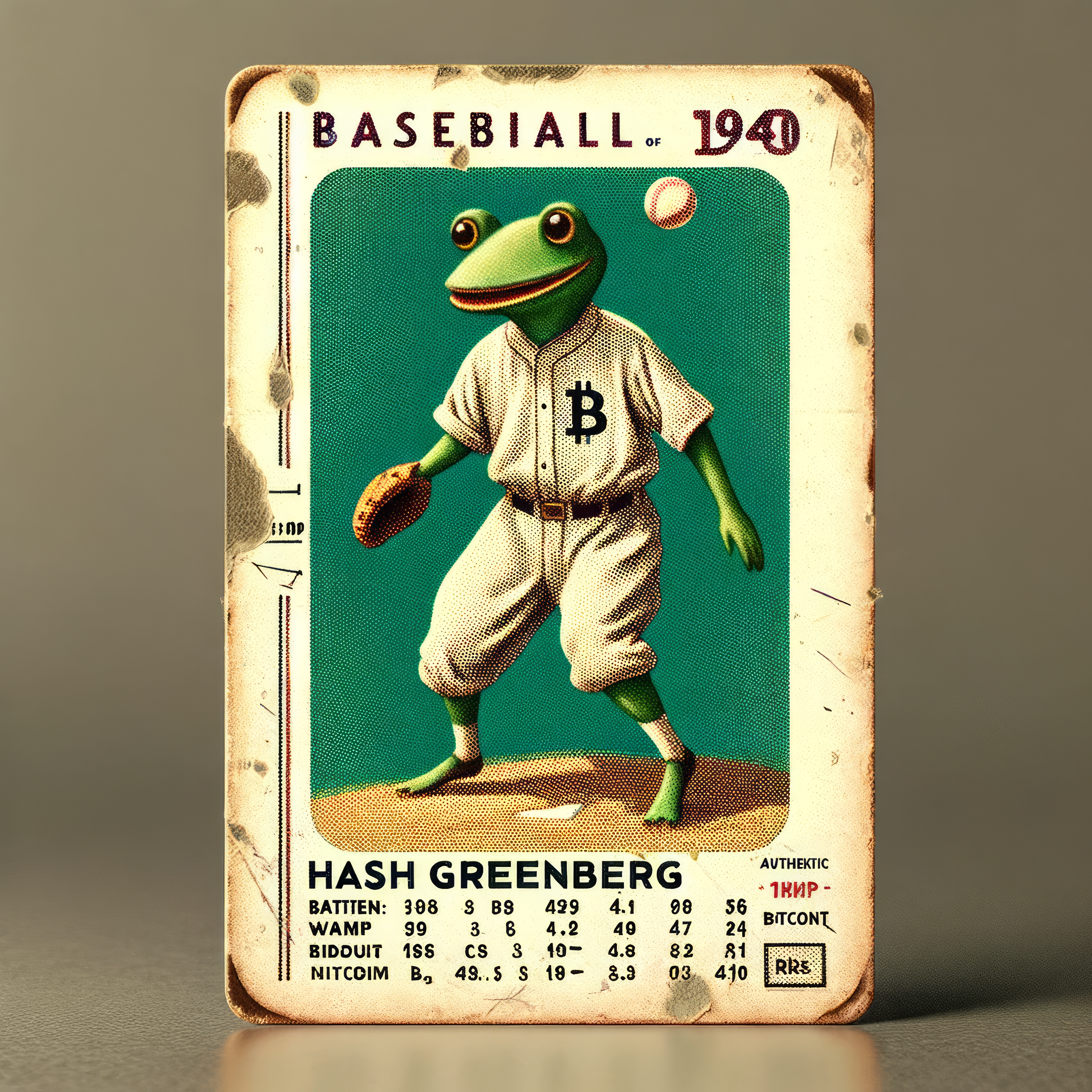
Example: Crypto Trading Cards #422 (Wagner, Wagper) is a reference to the famous T206 Honus Wagner card. ↓
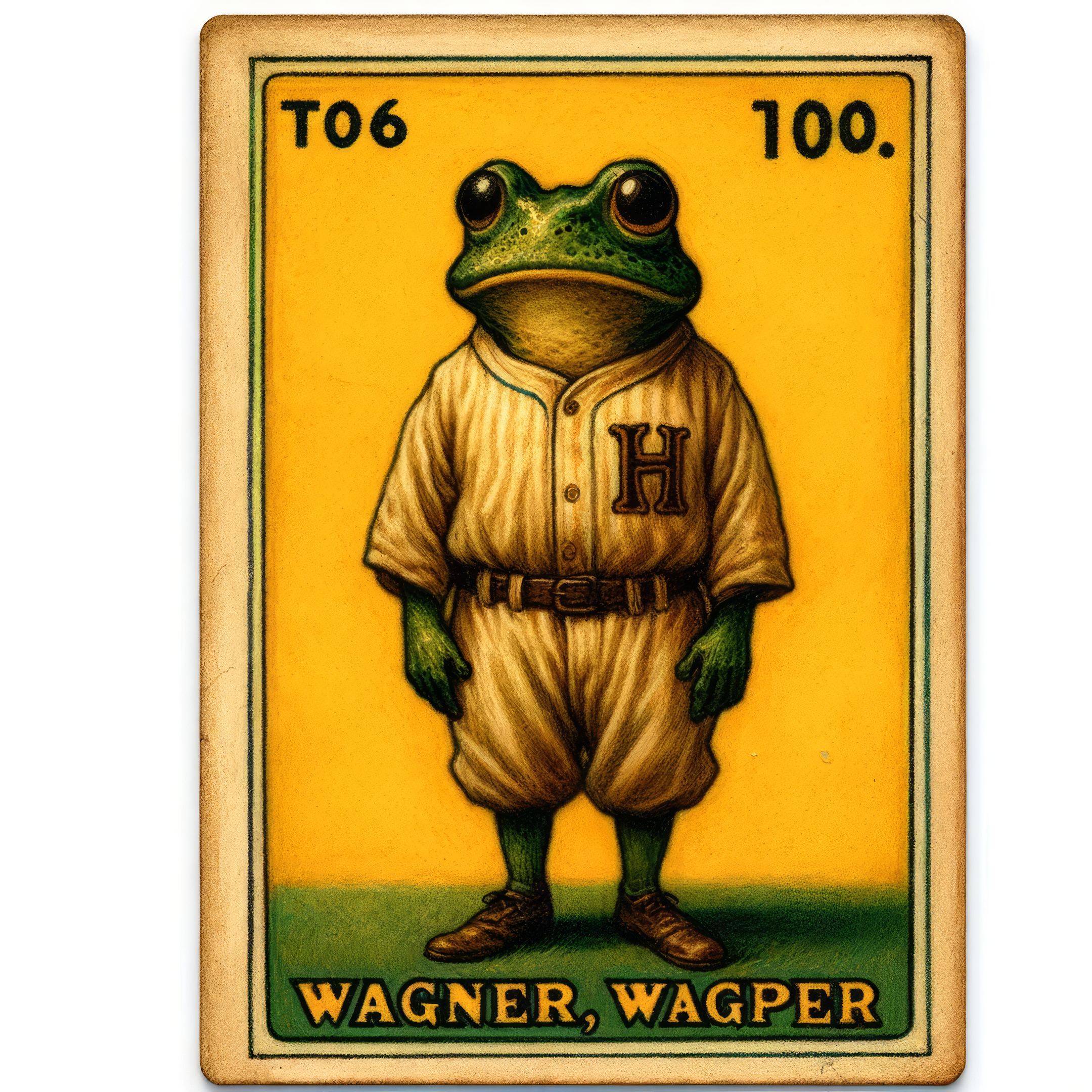
Additional Examples:
#501 (Mickey Mantoad): Mickey Mantle
#530 (Miner Minoso): Minnie Miñoso
#545 (Willie McFrogey): Willie McCovey
#605 (Alfrogo Griffin): Alfredo Griffin
#558 (Rod Accrew): Rod Carew
#398 (Etherman Munson): Thurman Munson
#74 (Froog Powell): Boog Powell
#672 (Lueth Apricio): Luis Aparicio
#75 (Blocky Colavito): Rocky Colavito
#102 (Yogeth Berra): Yogi Berra
#137 (Leap Newhouser): Hal Newhouser
#232 (Froggie Smith): Ozzie Smith
#243 (Schmidtoshi Mikeiamoto): Mike Schmidt
#655 (Dave Whittfield): Dave Winfield / Whitfield Diffie
#299 (Ander Dawson): Andre Dawson
#332 (Mr. Frogtober): “Mr. October” (Reggie Jackson)
#323 (Lou Gherfrog): Lou Gherig
#328 (Lou Block): Lou Brock
#586 (Nap Frogie): Nap Lajoie
#667 (Frank Froginson): Frank Robinson
#669 (Roy Campanamotto): Roy Campanella
#680 (Joe Nakamaggio): Joe DiMaggio#715 (Frogers Hornsby): Rogers Hornsby
4. SCARCITY
The total collection is 837 cards. The breakdown is as follows:
Decade Number
1880s 1
1890s 2
1900s 5
1910s 12
1920s 22
1930s 38
1940s 85
1950s 143
1960s 247
1970s 282
Totals 837
Additionally, there are 1,621 Hal Froggy Bobbleheads. This is the number that holders of Nakamigos and CLOAKS minted on January 17, 2024.
––––––––
We hope you enjoy collecting Crypto Trading Cards and investigating them further. The cards and the bobblehead are a tribute to the origins of cryptocurrency and a bonus for holders of Nakamigos & CLOAKS, which remain the signature collections.